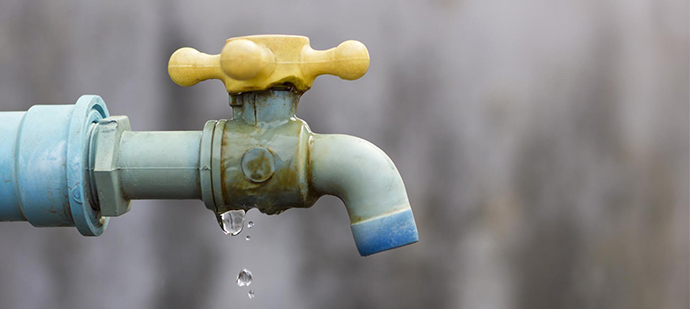Just how to Examine If Your Home Has a Hidden Leak
Just how to Examine If Your Home Has a Hidden Leak
Blog Article
What're your beliefs on Detecting hidden plumbing leaks?

Early detection of leaking water lines can mitigate a prospective disaster. Besides conserving you money, it will decrease the irritation and also disappointment. The minute you discover a leak, calling your plumber for repair services is the best service. Some little water leaks may not be noticeable. If you can not identify it with your naked eyes, right here are some hacks that aid.
1. Examine the Water Meter
Examining it is a proven means that aids you find leaks. If it moves, that indicates a fast-moving leakage. This indicates you might have a slow leakage that could even be underground.
2. Check Water Intake
If you find abrupt changes, in spite of your usage being the same, it means that you have leaks in your plumbing system. An abrupt spike in your expense indicates a fast-moving leakage.
Meanwhile, a constant rise monthly, despite having the very same practices, shows you have a sluggish leakage that's additionally gradually escalating. Call a plumber to thoroughly check your building, especially if you really feel a warm location on your flooring with piping underneath.
3. Do a Food Coloring Examination
30% comes from toilets when it comes to water consumption. Examination to see if they are running effectively. Decrease specks of food color in the tank and also wait 10 minutes. There's a leakage in between the storage tank and also dish if the shade in some way infiltrates your dish throughout that time without flushing.
4. Asses Outside Lines
Do not neglect to examine your outside water lines too. Should water seep out of the link, you have a loose rubber gasket. One tiny leakage can throw away bunches of water and also surge your water expense.
5. Assess the circumstance as well as check
House owners ought to make it a routine to check under the sink counters and even inside cupboards for any bad odor or mold development. These two red flags suggest a leak so timely focus is needed. Doing regular examinations, also bi-annually, can conserve you from a major problem.
If you understand your home is currently old, keep a careful eye on your heating units, hose pipes, pipelines etc. Look for discolorations and also compromising as most home appliances and pipelines have a life expectancy. They will certainly likewise normally degrade because of damage. Don't wait for it to escalate if you presume leaking water lines in your plumbing system. Call a specialist plumber today so you don't end up with a terrible mess in your house.
Early detection of leaking water lines can mitigate a prospective disaster. Some small water leaks might not be noticeable. Inspecting it is a proven way that helps you find leaks. One little leak can throw away bunches of water and increase your water expense.
If you presume dripping water lines in your plumbing system, don't wait for it to intensify.
How to Know If Your Home Has a Hidden Leak
Water Meter Reveals Inexplicable Water Usage
If you’d like to test whether or not there’s a leak somewhere in your home, you can do this using your water meter. Here is how to conduct the test:
Don’t use any water in your home for at least 30 minutes; this also means not turning on faucets or water-using appliances.
Go outside, and check your water meter for activity.
If your water meter shows that there was activity, even though no one was using any water, this proves that there is a leak in your home.Visible Mold or Mildew Growth
Leaks behind walls create moist, dark environments that allow mold and mildew to grow and thrive. Eventually, you might see mold growth forming on the wall closest to a hidden leak.
If mold is growing in an area that receives a high amount of moisture, such as a bathroom, it may simply be an indication that better ventilation is needed. However, if you see mold growth on a wall or the ceiling in an area where you would not expect, you probably have a hidden leak.
Musty, Mildew Odor
Sometimes you might not be able to see the mold or mildew that is growing as a result of a leak. However, the smell can give the problem away just as easily. If you catch a whiff of something musty, there’s a good chance that old water is collecting somewhere in your home that you can’t see.
Stained/Warped Walls, Ceilings, or Floors
When your home soaks up water, a variety of red flags can become visible, including ceiling stains, bubbling drywall, warped walls, and sagging floors. While these issues can be caused by excess humidity, they can also be signs that a pipe or plumbing connection has started leaking behind your walls.
Inexplicably High Water Bill
After a while, you get a general sense for what your water bill should be. If you own a pool or sprinkler system, your bill will tend to be higher during summer. However, if you receive a water bill that seems especially high, and you can’t figure out what caused it, then you may have a hidden leak somewhere that’s increasing your bill.
https://www.plumbingjoint.com/blog/2019/july/how-to-know-if-your-home-has-a-hidden-leak/

As a serious reader about Detecting hidden plumbing leaks, I think sharing that piece of content was a great idea. Be sure to set aside a second to promote this post if you appreciated it. We treasure reading our article about Leaking water lines.
Report this page